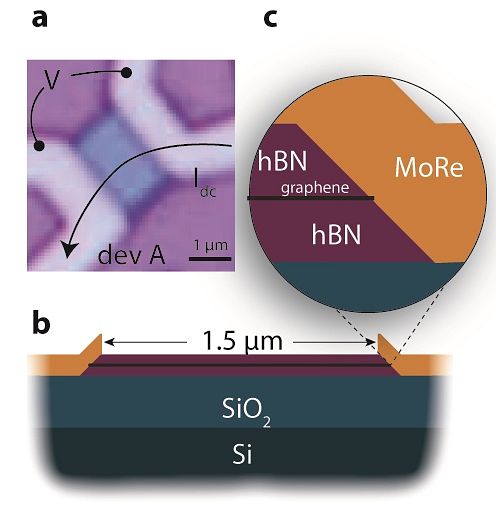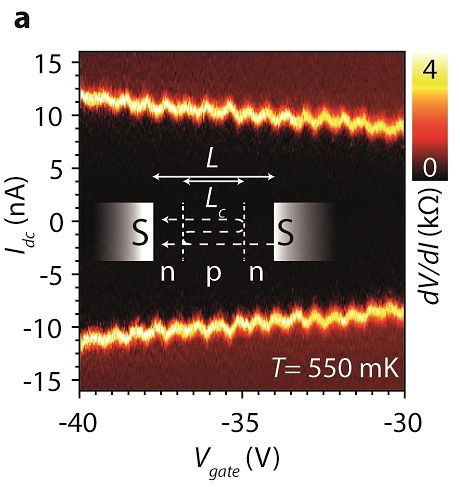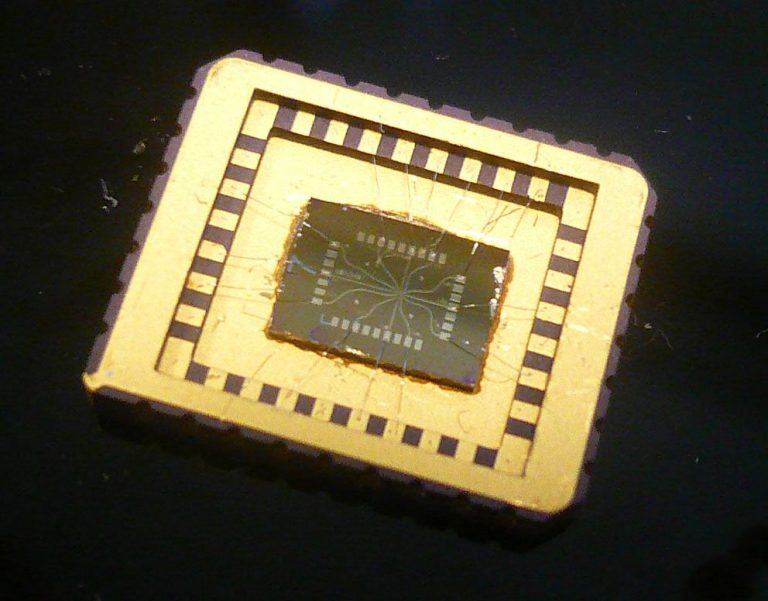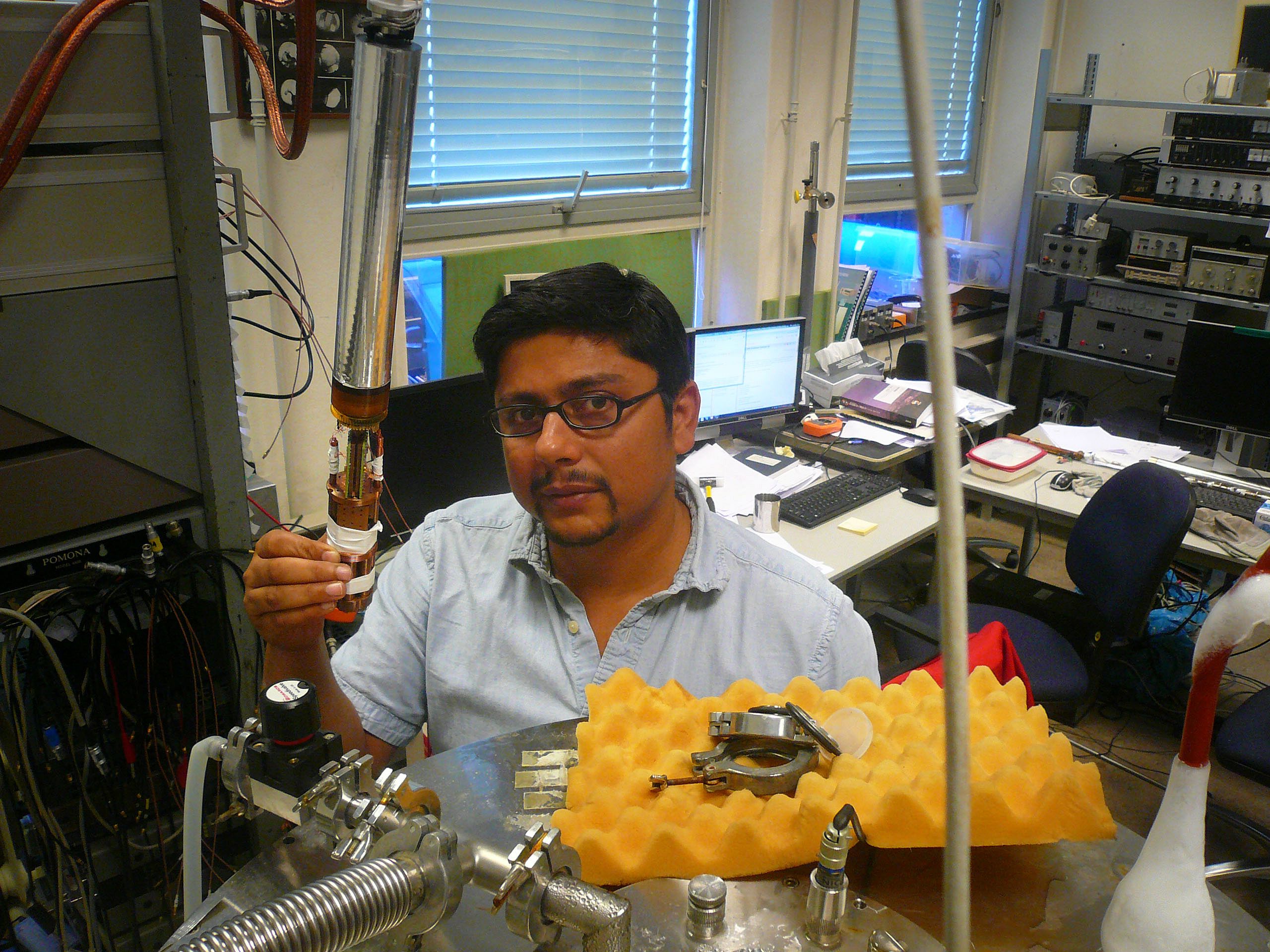A micron-sized piece of graphene wedged in between two superconductors features new physics. TU Delft researchers published their findings in Nature Nanotechnology.
Articles published in the midst of summer risk being overlooked. This almost happened to the article by Dr. Srijit Goswami, Dr. Victor Calado, Professor Lieven Vandersypen and others at the Kavli Institute of Nanoscience (Faculty of Applied Sciences) and Leiden University. Their experiments with a tiny flake of graphene wedged between two superconductors were published in Nature Nanotechnology on July 27, 2015. ‘These achievements will open new avenues to study graphene in interaction with superconductors’, the authors stated.
Physicists have modelled electronic behaviour between superconductors (which have no electrical resistance below their critical temperature) and graphene (a sheet of carbon atoms only one atom thick). So far, however, the models couldn’t be put to the test because either the graphene was too poor in quality or the connection to the superconductor was not well defined or hidden. “It’s mostly on the interface between graphene and superconductors where the most interesting phenomena take place”, explained Goswami.

The ultra-neat sample that the TU Delft researchers manufactured consists of a rectangle-shaped sheet of graphene (1.5 by 2.0 micrometres) sandwiched in between two layers of ultra smooth insulating boron nitride. The graphene sandwich sits on top of a silicon oxide base in between two superconducting contacts made of Molybdenum-Rhenium. Such a small bridge between two superconductors is known as a Josephson junction. These are commonly used for measuring small variations in magnetic fields originating from a heart or the brain.
This fundamental research project, however, was aimed at exploring new physics, such as the unusual behaviour of electronic currents in graphene. “Currents in a superconductor experience no resistance, but there is a limit”, said Vandersypen. “If currents get larger than the critical value, the material will no longer be superconducting.”

A graph in the article shows what happens when a current (on the vertical axis) increases. It goes from the black area (resistance zero, superconducting) into the brown region (some resistance, normal conductance). The yellow line in between separates the superconducting behaviour from normal conductance.
What came as a surprise is the wave-like shape of the yellow line. Vandersypen recounted the explanation that the researchers came up with: “Electrons not only flow from A to B, but some reflect back to A and to B again. In optics, this is known as the Fabry-Pérot effect that shows up as an interference pattern of concentric dark and light circles. The wave-like line is the result of interference between electron waves in graphene.”
To the researchers, this interference pattern means that their graphene sample is ultra clean. Any minor imperfection in graphene would scatter electrons, making a ping pong of the electrons most unlikely. Electrons would have long been dispersed before the double reflection.
More fundamental discoveries may follow like the researchers predicted. And, as is often the case, someone else has thought of an application for the graphene chip. Dr. Gary Steele from the same department wants to explore graphene’s potential in microwave detection.




Comments are closed.